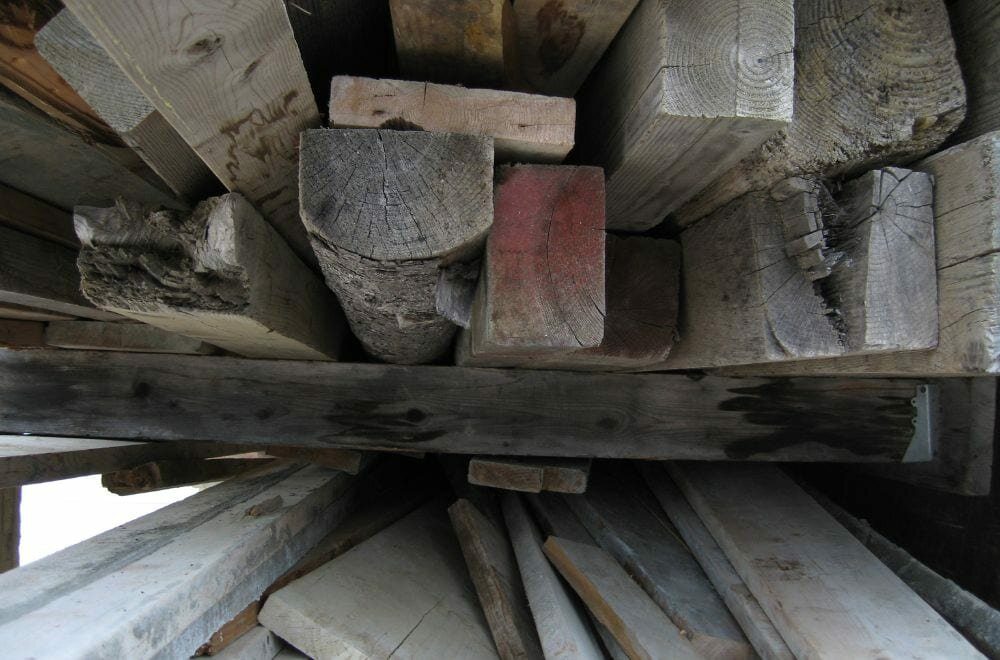If you’re a homeowner, you may be wondering how much it will cost to paint your wooden fence. The answer to this question depends on several factors, such as the size of your fence, the type of paint you choose, and whether you plan to do the work yourself or hire a professional.
According to Homewyse, the cost to paint a fence in 2023 starts at $1.93 – $3.88 per square foot. However, this estimate can vary depending on your location, the size of your fence, and any additional options you choose. It’s important to note that this estimate only includes the cost of labor and materials, and does not account for any additional expenses such as permits or equipment rental.
When it comes to painting your wooden fence, you have several options to choose from. HomeAdvisor suggests that the average cost to paint or stain a fence is $3 to $14 per linear foot, or $1 to $3 per square foot. The method you choose to paint, the number of coats you apply, and whether you hire a professional or do the work yourself can all impact the final cost. Keep in mind that staining your fence may be a more cost-effective option, as it typically requires less paint and can last longer than traditional paint.
Understanding Your Wooden Fence
When it comes to painting your wooden fence, it’s important to understand the type of wood and the size of your fence. This will help you determine the amount of paint or stain you’ll need and give you an idea of the overall cost.
Type of Wood
The type of wood your fence is made from can have a big impact on the cost of painting or staining. Some woods are more expensive than others, and some require more preparation before painting. Here are some common types of wood used for fences:
- Cedar: A popular choice for its natural resistance to rot and insects. Cedar is also known for its beautiful color variations and is relatively easy to paint or stain.
- Redwood: Another popular choice for its natural resistance to decay and insects. Redwood is more expensive than cedar but has a similar color and texture.
- Pine: A more affordable option, pine is easy to find and easy to paint. However, it’s not as durable as cedar or redwood and may require more maintenance over time.
Size of Fence
The size of your fence is another important factor to consider when calculating the cost of painting or staining. A larger fence will require more paint or stain and will take longer to complete. Here are some tips for measuring your fence:
- Measure the length of each side of your fence.
- Multiply the length of each side by the height of your fence to get the total square footage.
- Add up the square footage of each side to get the total square footage of your fence.
Once you know the type of wood and the size of your fence, you can use this information to estimate the amount of paint or stain you’ll need and get a better idea of the overall cost.
Cost Factors
When it comes to painting a wooden fence, there are two main cost factors to consider: material costs and labor costs.
Material Costs
The cost of materials will depend on the type of paint or stain you choose, as well as the size of your fence. Generally, you can expect to pay between $25 and $45 per gallon of paint or stain. Keep in mind that you may need multiple gallons depending on the size of your fence.
Other materials you may need to purchase include brushes, rollers, and drop cloths. These items can add up, so be sure to factor them into your overall budget.
Labor Costs
Labor costs will vary depending on the size of your fence and the amount of prep work required. If your fence is in good condition and just needs a fresh coat of paint, labor costs may be relatively low. However, if your fence is in disrepair and needs extensive prep work, labor costs may be higher.
On average, you can expect to pay between $1 and $3 per square foot for labor. This includes prep work such as power washing and scraping, as well as applying the paint or stain.
It’s important to get multiple quotes from contractors to ensure you’re getting a fair price for both materials and labor. Additionally, be sure to ask for references and check online reviews to ensure you’re hiring a reputable contractor.
By considering both material and labor costs, you can create a realistic budget for painting your wooden fence.
Preparation Costs
Before painting your wooden fence, you need to prepare it properly to ensure that the paint adheres well and looks great. Preparation costs typically include cleaning and sanding the fence.
Cleaning
Cleaning your fence is an essential part of the preparation process. If you skip this step, the paint may not adhere properly, and the finish may look uneven. The cost of cleaning your fence will depend on its size and condition.
If you choose to hire a professional to clean your fence, you can expect to pay between $0.15 and $0.50 per square foot. For a 150-foot fence, this would cost between $22.50 and $75. If you decide to clean the fence yourself, you will need to purchase a pressure washer or rent one from a home improvement store. The cost of renting a pressure washer can range from $40 to $100 per day.
Sanding
Sanding your fence is another important step in the preparation process. Sanding helps to smooth out any rough spots or splinters and creates a surface that the paint can adhere to. The cost of sanding your fence will depend on its size and condition.
If you choose to hire a professional to sand your fence, you can expect to pay between $0.50 and $2.00 per square foot. For a 150-foot fence, this would cost between $75 and $300. If you decide to sand the fence yourself, you will need to purchase or rent a power sander. The cost of renting a power sander can range from $30 to $60 per day.
In summary, the preparation costs for painting a wooden fence can range from $22.50 to $375 if you choose to hire a professional to clean and sand your fence. If you decide to do the work yourself, you will need to purchase or rent a pressure washer and power sander, which can cost between $70 and $160 per day.
Additional Costs
When it comes to painting a wooden fence, there are additional costs you should consider beyond just the cost of paint and labor. Here are two important factors to keep in mind:
Paint Type
The type of paint you choose for your fence can impact the overall cost of the project. While some paints are less expensive, they may not last as long or provide the same level of protection for your fence. Here are some common types of paint and their average cost per gallon:
- Latex Paint: $15 – $40 per gallon
- Oil-Based Paint: $20 – $50 per gallon
- Stain: $20 – $40 per gallon
It’s important to note that some types of paint may require additional preparation, such as priming or sanding, which can add to the cost of the project.
Weather Considerations
The weather can also impact the cost of painting your wooden fence. If you live in an area with extreme temperatures or high humidity, it may be necessary to take additional steps to ensure the paint adheres properly and lasts as long as possible. This can include using specialized paint or primers, which may be more expensive than standard options.
Additionally, if you plan to paint your fence during a rainy season, you may need to factor in additional time for the project or reschedule altogether to avoid compromising the quality of the finish.
Overall, it’s important to consider these additional costs when planning your fence painting project to ensure you get the best results possible.
DIY Vs Hiring a Professional
When it comes to painting a wooden fence, you have two options: DIY or hiring a professional. Both options have their pros and cons, and it’s up to you to decide which one is the best for your situation.
DIY Fence Painting
If you’re on a budget, DIY fence painting might be the way to go. It can save you money on labor costs, and you can take your time to do the job right. However, keep in mind that painting a fence can be time-consuming and require a significant effort. You’ll need to prepare the surface by cleaning and sanding it, and you’ll need to apply multiple coats of paint or stain.
If you decide to go the DIY route, here are some tips to help you get started:
- Choose the right paint or stain for your fence. Make sure it’s suitable for outdoor use and can withstand the elements.
- Clean the surface of your fence thoroughly before painting. Remove any dirt, grime, or mildew with a pressure washer or a scrub brush.
- Sand the surface of your fence to create a smooth, even surface for painting.
- Apply the paint or stain in thin, even coats, and allow each coat to dry completely before applying the next one.
Hiring a Professional
If you don’t have the time or expertise to paint your fence yourself, hiring a professional might be the way to go. A professional painter can get the job done quickly and efficiently, and they have the tools and experience to do the job right.
However, hiring a professional can be more expensive than DIY fence painting. The cost will depend on the size of your fence, the type of paint or stain you choose, and the labor costs in your area.
If you decide to hire a professional, here are some tips to help you find the right one:
- Get multiple quotes from different painters to compare prices and services.
- Check the painter’s credentials, including their license and insurance.
- Ask for references from previous clients and check online reviews.
- Make sure you have a written contract that outlines the scope of the work, the timeline, and the cost.
In conclusion, whether you decide to paint your fence yourself or hire a professional, make sure you choose the option that works best for your needs and budget.
Maintenance and Long-Term Costs
Maintaining your wooden fence is important to ensure its longevity and prevent costly repairs down the line. Here are some tips to keep your fence looking great for years to come:
-
Regularly clean your fence with a power washer or hose to remove dirt, debris, and stains. This will prevent buildup that can lead to rot or discoloration.
-
Inspect your fence for damage such as cracks, warping, or loose boards. Addressing these issues promptly can prevent further damage and save you money in the long run.
-
Apply a protective sealant or stain every few years to protect your fence from the elements. This can help prevent rot, insects, and fading.
-
Trim any nearby trees or bushes that may be touching your fence. This will prevent damage from branches or leaves rubbing against the wood.
In addition to regular maintenance, it’s important to consider the long-term costs of owning a wooden fence. While wood is a beautiful and classic choice, it does require more upkeep than other materials such as vinyl or metal. Here are some factors to consider:
-
Replacement costs: Wooden fences typically last 10-15 years before needing to be replaced. This can be costly, especially if you have a large fence or multiple sections.
-
Repair costs: Even with regular maintenance, wooden fences can still experience damage from weather, pests, or accidents. Repair costs can add up over time.
-
Staining and sealing costs: While staining and sealing your fence can help prolong its life, it does come with a cost. You’ll need to factor in the cost of materials and labor when planning your budget.
-
Insurance costs: Depending on your insurance policy, owning a wooden fence may increase your premiums. This is because wooden fences are more prone to damage and may require more frequent repairs.
Overall, owning a wooden fence can be a great investment if you’re willing to put in the time and effort to maintain it. By following these tips and considering the long-term costs, you can make an informed decision about whether a wooden fence is right for you.

 When it comes to woodworking, choosing the right type of wood is essential. There are many different types of wood available, each with its own unique properties and characteristics. Some woods are more expensive than others, while some are more durable or easier to work with.
When it comes to woodworking, choosing the right type of wood is essential. There are many different types of wood available, each with its own unique properties and characteristics. Some woods are more expensive than others, while some are more durable or easier to work with.
